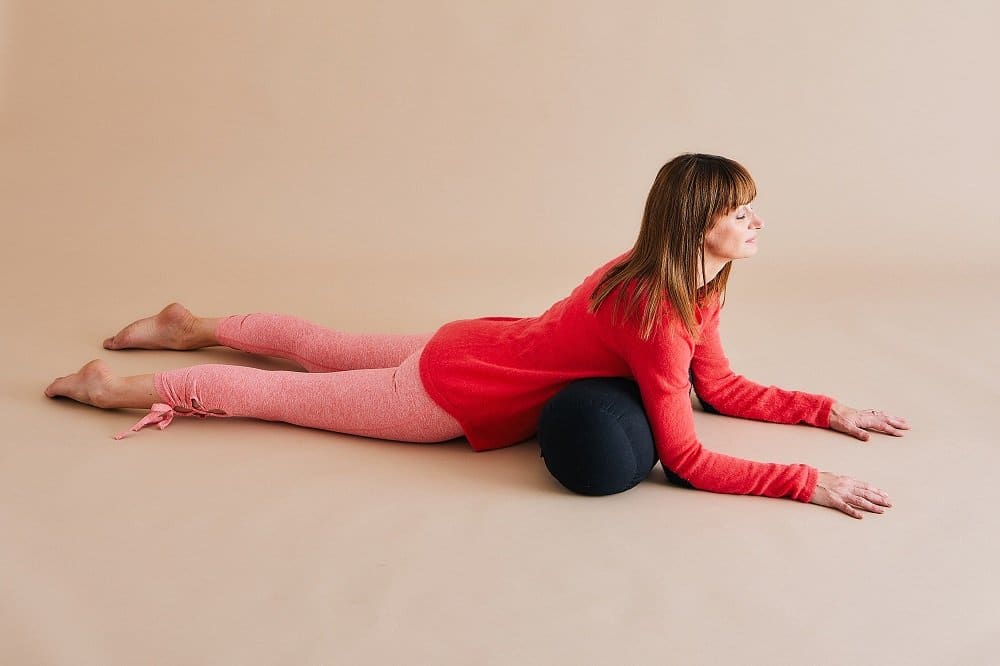Back pain is a common ailment that affects millions of people worldwide, causing discomfort and limitations in daily life.
While vigorous exercise or strenuous activities may aggravate back pain, gentle yoga offers a soothing and therapeutic approach to finding relief.
In this article, we’ll explore the benefits of gentle yoga for back pain relief and introduce a series of gentle yoga poses and practices that can help alleviate discomfort and promote healing.
Understanding Gentle Yoga for Back Pain Relief
Gentle yoga is a form of yoga that focuses on slow, mindful movements, deep breathing, and relaxation techniques to gently stretch and strengthen the body while promoting a sense of calmness and well-being.
When practiced mindfully, gentle yoga can help alleviate tension, improve flexibility, and relieve discomfort in the back, making it an ideal practice for those experiencing back pain.
Benefits of Gentle Yoga for Back Pain Relief
- Improved Flexibility: Gentle yoga poses gently stretch and elongate the muscles of the back, improving flexibility and range of motion.
- Reduced Muscle Tension: Mindful movement and deep breathing in gentle yoga help release tension and tightness in the muscles, reducing discomfort and stiffness in the back.
- Enhanced Strength and Stability: Gentle yoga poses strengthen the muscles of the back, core, and supporting muscles, improving stability and reducing the risk of future injury.
- Relaxation and Stress Reduction: Gentle yoga incorporates relaxation techniques such as deep breathing, meditation, and guided imagery, promoting relaxation and reducing stress, which can exacerbate back pain.
- Mind-Body Connection: Gentle yoga encourages awareness of the body and breath, helping individuals develop a deeper understanding of their physical sensations and emotional well-being.
Gentle Yoga Poses for Back Pain Relief
- Cat-Cow Stretch (Marjaryasana-Bitilasana):
- Start on your hands and knees in a tabletop position.
- Inhale as you arch your back, lifting your chest and tailbone toward the ceiling (Cow Pose).
- Exhale as you round your spine, tucking your chin to your chest and drawing your belly button toward your spine (Cat Pose).
- Repeat this sequence several times, moving with your breath to gently mobilize the spine and relieve tension in the back.
- Child’s Pose (Balasana):
- Kneel on the mat with your big toes together and your knees apart.
- Sit back on your heels and extend your arms forward, lowering your forehead to the mat.
- Relax your entire body, allowing your spine to lengthen and your back muscles to release tension. Hold this pose for several breaths, focusing on deepening your breath and surrendering to the stretch.
- Sphinx Pose (Salamba Bhujangasana):
- Lie on your stomach with your legs extended behind you and your elbows directly under your shoulders.
- Press your forearms into the mat, lifting your chest and head while keeping your pelvis grounded.
- Relax your shoulders away from your ears and lengthen through the crown of your head, creating a gentle backbend in your spine. Hold this pose for several breaths, feeling the stretch along the front of your body and the gentle compression in your lower back.
- Supine Twist (Supta Matsyendrasana):
- Lie on your back with your knees bent and feet flat on the floor.
- Extend your arms out to the sides in line with your shoulders.
- Lower both knees to one side, keeping your shoulders grounded and turning your head to gaze in the opposite direction.
- Hold this twist for several breaths, allowing your spine to gently rotate and release tension in your lower back. Repeat on the other side to balance the stretch.
- Legs-Up-the-Wall Pose (Viparita Karani):
- Sit with your side against a wall and your knees bent.
- Swing your legs up the wall as you lie back, resting your hips against the wall and extending your legs upward.
- Keep your arms relaxed by your sides or place your hands on your belly or chest.
- Close your eyes and relax into the pose, allowing your back muscles to release tension and your spine to decompress. Hold this pose for several minutes, focusing on deep, diaphragmatic breathing.
Incorporating Breathwork and Mindfulness
As you practice gentle yoga for back pain relief, focus on deepening your breath and cultivating mindfulness. Deep, diaphragmatic breathing can help relax tense muscles and calm the nervous system, enhancing the effectiveness of the poses.
As you breathe, bring awareness to any areas of tension or discomfort in your back, and allow your breath to facilitate release and relaxation.
Precautions and Considerations
While gentle yoga can be beneficial for back pain relief, it’s essential to listen to your body and practice mindfully, especially if you have a history of back issues or injuries.
Avoid overstretching or forcing yourself into poses that exacerbate your pain. Instead, focus on gentle movements and gradual progression, making use of props such as blankets, bolsters, or blocks to support your practice and ensure safety and comfort.
Conclusion
Incorporating gentle yoga into your routine can provide relief for back pain, improve flexibility, and promote overall spinal health.
Whether you’re dealing with occasional discomfort or chronic back pain, regular practice of gentle yoga poses and relaxation techniques can help alleviate tension, reduce stiffness, and restore comfort and mobility to your body.
Remember to listen to your body, breathe deeply, and practice mindfully as you move through each pose. With dedication and consistency, gentle yoga can be a valuable tool for finding relief from back pain and restoring balance to your life.



